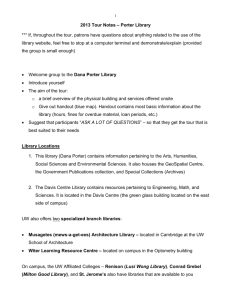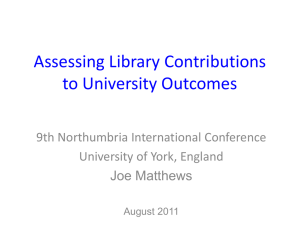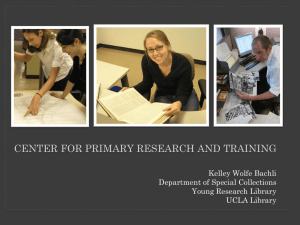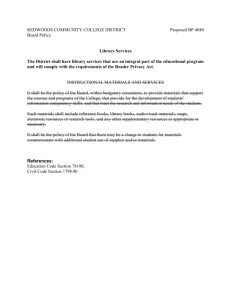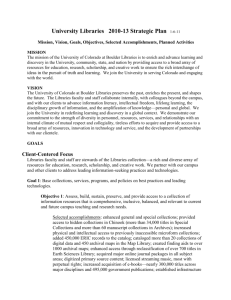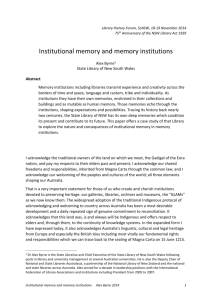Transcript_Metro Morning Interview with Larry Alford_August
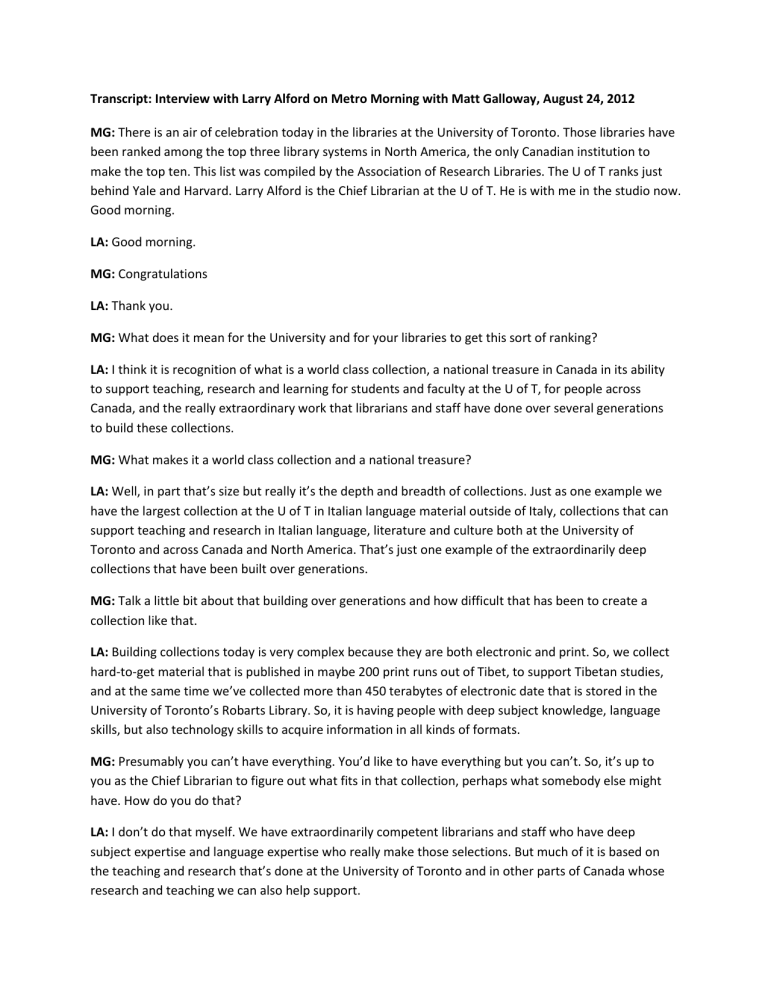
Transcript: Interview with Larry Alford on Metro Morning with Matt Galloway, August 24, 2012
MG: There is an air of celebration today in the libraries at the University of Toronto. Those libraries have been ranked among the top three library systems in North America, the only Canadian institution to make the top ten. This list was compiled by the Association of Research Libraries. The U of T ranks just behind Yale and Harvard. Larry Alford is the Chief Librarian at the U of T. He is with me in the studio now.
Good morning.
LA: Good morning.
MG: Congratulations
LA: Thank you.
MG: What does it mean for the University and for your libraries to get this sort of ranking?
LA: I think it is recognition of what is a world class collection, a national treasure in Canada in its ability to support teaching, research and learning for students and faculty at the U of T, for people across
Canada, and the really extraordinary work that librarians and staff have done over several generations to build these collections.
MG: What makes it a world class collection and a national treasure?
LA: Well, in part that’s size but really it’s the depth and breadth of collections. Just as one example we have the largest collection at the U of T in Italian language material outside of Italy, collections that can support teaching and research in Italian language, literature and culture both at the University of
Toronto and across Canada and North America. That’s just one example of the extraordinarily deep collections that have been built over generations.
MG: Talk a little bit about that building over generations and how difficult that has been to create a collection like that.
LA: Building collections today is very complex because they are both electronic and print. So, we collect hard-to-get material that is published in maybe 200 print runs out of Tibet, to support Tibetan studies, and at the same time we’ve collected more than 450 terabytes of electronic date that is stored in the
University of Toronto’s Robarts Library. So, it is having people with deep subject knowledge, language skills, but also technology skills to acquire information in all kinds of formats.
MG: Presumably you can’t have everything. You’d like to have everything but you can’t. So, it’s up to you as the Chief Librarian to figure out what fits in that collection, perhaps what somebody else might have. How do you do that?
LA: I don’t do that myself. We have extraordinarily competent librarians and staff who have deep subject expertise and language expertise who really make those selections. But much of it is based on the teaching and research that’s done at the University of Toronto and in other parts of Canada whose research and teaching we can also help support.
MG: You mentioned the digital collections. How extensive are they compared to, perhaps other collections, but also what you have in print?
LA: Print remains a major part of the way that human beings have recorded history and culture and research, but increasingly those collections are becoming digital. They’re published in digital format, they’re born digitally, so as I said we have 450 terabytes of data stored at the University of Toronto that allows faculty and graduate students, undergraduates, to ask questions in new and different ways, to explore information in new and different ways looking across vast amounts of material. We’ve also, though, begun to digitize the backfile, the print collections that we have, so we have over the last few years digitized 600,000 print volumes that are out of print or out of copyright, in order to make that material more widely accessible and easily accessible.
MG: Is it a smooth transition? We know that whether it’s the newspaper business, it’s the broadcasting business, the publishing business, the transition from print to digital can be a rocky one. So from your perspective, as you’re making that evolution, how smooth has that been?
LA: We have had in the Libraries to develop new expertise, for example in reading licenses, in negotiating licenses, in the purchasing of electronic material. It’s a very different way to acquire material from acquiring print material. So we’ve built new expertise. One of the interesting things about this library is its history of technological innovation dates back to 1960. It was among the first, not just libraries, but institutions to use technology to make work more efficient, to make information more widely accessible, and was actually an early pioneer before any other library in the world began to automate bibliographic processes. And that’s one example of actually the extraordinary work that has gone on in these libraries both to build collections but also to make collections more accessible.
MG: And the amazing thing is that these collections continue to build. It’s not as though it’s just a dusty archive. But this is something that is a living, breathing thing that you’re still trying to build.
LA: That is indeed true. As I mentioned to you earlier, we just acquired one of the world’s best collections of material on Thomas Hardy from a donor. And we are actually seeking funds to purchase the manuscripts of General James Wolfe. They are right now in private hands. If we are not able to purchase them at the University of Toronto and raise the money to do that then they will probably go to another private collector or to a United States or European institution and they really need to be in
Canada as a part of Canada’s heritage.
MG: Is it a bit of a dog fight to try and do that, to try and get your hands on something that you want before somebody else does?
LA: There certainly is competition to acquire material like that, and competition from outside the country. And something like the Wolfe material, you know I think it’s very important that it remain, or that it come to Canada. It’s actually not here now. So, yes, but the issue is always finding the funds to do that sort of thing.
MG: And you look for donations from, perhaps, people who’ve been through those libraries, but also people who understand the value of history being here?
LA: Absolutely. A great library like the University of Toronto Libraries is really about preserving the record of human achievement, of human research, culture and history. And certainly the Wolfe collection as an example is a part of doing that so that that material is here 200 years from now for scholars, for students.
MG: It’s a great honor. Congratulations on your work.
LA: Thank you so much.
MG: Larry Alford is the Chief Librarian at the University of Toronto. The University has been ranked in the top three library systems in North America, after Harvard and Yale.


